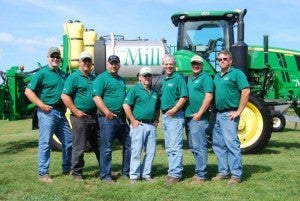 I’ve always been mindful of the environment, but it never struck me that conservation was something you could focus on professionally. It was just something that you cared about.
I’ve always been mindful of the environment, but it never struck me that conservation was something you could focus on professionally. It was just something that you cared about.
That’s why my career until now has included a range of other pursuits – playing music professionally and teaching percussion to public school students, collecting and analyzing intelligence in the U.S. Army, and conducting social network analysis for the Department of Defense.
When U.S. military involvement (and thus my own involvement) in the wars in Iraq and Afghanistan began to diminish, I took stock of what was important to me and what I wanted to spend the rest of my career doing. Read More










 Land O’Lakes SUSTAIN® platform – a powerful tool that can make a real impact in improving regional water quality — is coming to the Chesapeake Bay.
Land O’Lakes SUSTAIN® platform – a powerful tool that can make a real impact in improving regional water quality — is coming to the Chesapeake Bay.
